As part of a team session at last year’s company retreat, the content team asked a few of our fellow Help Scouts to speak into a camera and tell us what they thought about our content program and why they think it’s important.
We received a lot of kind comments, but the one that stuck out the most came from Help Scout’s CEO, Nick Francis. Nick described our content as, “Our brand, personified.”
It’s true — content plays a big role in shaping how our company is perceived by both our customers and the general public. From providing thought leadership through The Supportive and In the Works to the helpful resources written by support pros on the blog to everything else in between, our content does a lot of the heavy lifting when it comes to humanizing the brand.
Creating and curating that content is a big responsibility that mostly falls to the five of us currently on the team. However, Nick’s words reinforced something that had been on our minds. Our content is our brand personified, which means that readers should see all of Help Scout — from engineering to support to leadership — reflected in that work.
In other words, we can’t do this alone.
But why can’t the content team tell the whole story?
It may seem like it would be easy for the team to speak to all of the work being done behind the scenes at Help Scout, but in practice, it just wouldn’t work. Our content is a bit like an extension of our product — we want to help customers build better businesses and customer experiences. That takes diverse perspectives and learned experiences that we can’t provide alone.
Take the topic of customer service: Help Scout publishes a lot of support-related content. Both Mat (or Patto, as he’s known around these parts) and I come from support backgrounds, so we definitely have a leg up when writing on the topic. We can chat about the benefits of one help desk over another, give tips on how to build a support team, and even explore new ground such as discussing the use of AI in customer service.
It’s a great foundation for our work; however, if our audience has questions about how our customers experience Help Scout — what they love, what their pain points are, how they feel about a new feature — we’re not the right people to tell that story. That’s a job for the pros — our support team.
The need to seek out someone who really knows their stuff is even more important when we want to branch out into topics beyond support. The content team doesn’t have experience in every field we want to talk about, and our research skills cannot compete with the expertise present in our engineering, finance, design, people, and leadership teams.
If we’re going to publish content that provides legitimate value to our readers, we need to always be on the lookout for more ways to bring those voices to the surface.
Encouraging more people to write
While we’ve always had content created by people from around the company, the frequency of participation had dropped off. So last year, we set a goal to bring employee voices back to the blog.
Since change usually requires being intentional, we added a couple of goals to our 2024 Q1 planning:
Publish five posts written by internal authors from outside of the content team.
Create a working group for members of the support and content teams to promote more collaboration.
That’s right, we decided to kick things off by getting back to our roots: customer service-focused content written by the amazing people on our support team.
Collaborating with c-team
To get things rolling, a group of people from both content and c-team — what we call our support team — attended a kickoff meeting where we brainstormed as many ideas for new content as we could. Now, you never quite know how an activity like this will go, but in less than an hour we had a lengthy doc full of content ideas and a Zoom call full of excited people who were ready to dive in.
Over the coming months, we developed a working process that consisted of three elements:
Content creation: Team members would work on content (blogs, webinar production, etc.) as their support schedules allowed.
Meetings: We met every other week to give status updates, work through any outstanding issues, discuss publication timing, and talk through ideas for future content.
Asynchronous collaboration: In between meetings, the work continued in Google Docs, Asana (though we use Linear now), and Slack. We created a channel where people could easily drop a draft in for review, ask questions, seek advice, or just chat.
We’ve published quite a few blog posts that came out of the working group including thought leadership pieces and deep dives into how customers can get the most out of Help Scout.
We also hosted several live events, including a chat about AI and a couple of “Conversation Corners.” Some have been serious and others a little more laid back and fun. For instance, we recently held a webinar that consisted of members of our team (as well as a guest) live reacting to customer service scenes from popular tv shows and movies.
Some posts written by our friends on c-team:
Behind the scenes with the people team
While our company obviously knows a lot about customer service, we also have knowledge on other topics like running a remote company and people management.
Luckily for us, Leah Knobler, VP of people, is often willing to share thoughts on how Help Scout approaches remote hiring, tips on how to mitigate unconscious bias during that process, and advice on how to plan a happy and productive company retreat.
Leah knows firsthand how important it is for a company to publish content that illustrates their culture, values, and work philosophy — she found out about Help Scout via a post on our blog!
Here are a couple of recent posts from Leah:
Getting technical with our engineering team
Another team that we’ve started working with more closely is our engineering team. These pieces are both some of the most fascinating pieces to publish and also some of the most challenging.
Though some of our readers undoubtedly have development experience, we don’t usually publish posts that are highly technical. This makes the editing process for engineering pieces extremely important.
We’ve learned that it’s essential for the writer to work closely with the content team during the editing phase. This helps us find just the right balance between the dev tips and tricks the author is excited to share and a story that all of our readers are able to follow and enjoy.
Check out a few favorite posts from our developers:
Inviting everyone to throw their hats into the ring
Once we were in a groove with the teams above, it was time to start looking for other people who might have exciting stories to share with our readers.
Back to last year’s company retreat — I hadn’t any intention of pitching writing for the blog while there, yet it happened. Again and again. In the buffet line at breakfast, at the table over dessert, during a down moment at a team building session, while waiting for the photographer to take the company photo, filling awkward silences in the hotel elevator — anyone subjected to me for any amount of time was enthusiastically offered a byline.

I wasn’t the only one working the room. I haven’t asked, but I’m sure Hillary was telling folks how excited we are to be working with and publishing pieces by the company at-large. And there was Patto. Having been at the company for so long (almost nine years now!), he knows everybody. He managed to recruit a few potential writers during his catch-ups, too.
The people I spoke to had no idea that writing a post for the blog was even an option, and while most were hesitant to make any promises, these casual conversations were great. It gave us the opportunity to answer questions and encourage those who sounded interested.
As our internal publishing process became more formalized, we made a more widespread call for content. In addition to those (literal) elevator pitches I made at our retreat, I created a Loom presentation that I posted in the company Slack. I went over all of the details of how folks could submit their ideas and drafts, what working with the team would look like, and announced a contest surrounding participation.
We’re still looking for the best way to increase involvement, but we have high hopes. And if all else fails, you’ll find me hiding behind a potted plant, ready to pounce on unsuspecting authors at this year’s retreat in Rome.
You’ve all been forewarned.
What I’ve learned from our internal contributor program
I have been a writer and editor for a long time; however, this is the first time I've ever helped manage this type of program. Just like with any new job or project, there were things that went wrong, or, if not wrong, at least turned out differently than I expected.
If you’re in a similar position and are thinking of rolling out an internal contributor program to your employees, here are a few things I learned during our first year that you might want to keep in mind as you get started.
Good collaboration requires a safe environment
One issue that we encountered was apprehension. It makes sense — if you’re not someone who naturally gravitates toward writing, typing up a blog post probably sounds about as inviting as a trip to the dentist.
What we have done to try to ease nerves is let everyone know that they don’t have to be “a good writer” to participate. We welcome everything from the vaguest hint of an idea to a blog post outline to a fully fledged draft, and we let the individual author guide the writing and editing process. Some people want to hop on a call and discuss their idea, others just want a few pointers. Either way, we let people know that we’re here and happy to help.
Patto was especially key to encouraging those in our c-team working group, gently nudging people to share their work and stretch their limits, offering helpful, timely feedback, and giving advice. He also led the group through a writing workshop. During the session, the group collaboratively worked through the stages of choosing a blog post topic, brainstorming, and creating a rough outline.
Working through the process helped demonstrate that writing is messy, and no matter how talented you are, good writing comes from revision and there’s no escaping the “bad draft” stage.
Don’t fear the red pen
Despite the fact that the line above is true and the best written works all got there through the editing process, there’s nothing more scary to a writer than Google Docs notifications. They tell you that the bad draft you’ve sent over to your boss, editor, or colleague has been opened and yes, they agree: It’s bad.

OK, that is not what the notifications say, but I know it can feel that way. And while we set up our program as a safe environment to experiment and build skills, I was nervous about editing my colleagues’ work. I wanted to make sure that I was providing help that was useful, made the piece better, wasn’t too heavy handed, and didn’t unintentionally discourage the writer.
That’s not an unsubstantial amount of worry, and, at first, it led to edits that really weren’t helping the pieces reach their full potential. Luckily, Hillary is a more cutthroat (experienced! The word I’m looking for is experienced!) editor than I am. She encouraged me to not hold back and to edit employee pieces in the same way I would expect my own to be edited.
Now at a year in, I can tell you that she was right; I had definitely been overthinking it. Everyone I worked with welcomed feedback every step of the way. In fact, there were even instances where people asked for more than I provided.
While you won’t catch me looking for that kind of abuse (kidding, kidding!), I’m glad that the team felt comfortable doing it.
Communication is key
As a fully remote company, we know how to work async, and we fully understand the importance of keeping each other in the loop. Yet, when work gets busy and project due dates are looming, it can be easy for smaller tasks to fall off the map (or Kanban board) accidentally.
This definitely happened a few times, and I worried that I might’ve let a couple of hopeful contributors down. Luckily, Help Scouts are the literal best and no one was ever upset with me, but I knew I needed to make some changes to the publishing process to avoid the problem in the future.
I made it a bit easier to visually see the stage of each piece in our project management software. I also prioritized keeping folks updated, even if that meant just giving them a heads-up that the review process may take longer than expected.
Be mindful of company priorities and timelines
Earlier I mentioned that we’ve been looking for the best way to encourage participation. One of the things we tried was setting up a raffle for those who completed a blog post draft during the last quarter of the year.
It felt like a great idea and there was a lot of enthusiasm when we announced it. However, when December rolled around and it was time to pick a winner, nobody had met all of the requirements.
Whomp, whomp.
Q4 ended up being a really busy time for Help Scout. This meant that several people pitched article ideas and even got drafts into the editing process, but they didn’t have enough time to get their posts across the finish line and do their regular jobs.
While I’m definitely sad that the campaign wasn’t successful, the queue, bug tickets, dev cycles, and our customers will always take priority. Going forward we’ll work to plan around company priorities and timelines so that our goals and expectations are better aligned with the business.
Focus on the goal, not the process
Though our content collaborations did slow down during that busy period, there were still opportunities for amplifying internal voices. We looked for chances to partner up with colleagues that were low effort on their part but still offered a way to promote their ideas.
An example of this was when Patto attended a c-team meeting a few months back. He asked them one simple question and then recorded their answers. Those quotes can now be used to create new content like blog posts and video shorts or even inserted into an episode of The Supportive podcast, all without putting any additional stress on the support team.
While this isn’t the “official” process we laid out, it still gets us to our end goal, and that’s what is most important.
Content is better with friends
While I hope that working with the content team has been a good experience for everyone who gave it a try, I think that I might be one of the people who benefitted the most from our efforts.
When writing is your profession, it’s really easy to get siloed and not have a lot of interaction with people outside of your immediate team, especially when the company is remote.
Over the last year, I got the chance to work with people who I hadn’t had the opportunity to interact with outside of the stray Slack thread. I enjoyed learning about what they do every day and how it impacts the business, and, really, it was just nice to get to know them a bit more.
Everybody has a story to tell
Now that we're more than a year into the employee writing program, I feel like we’ve really hit our stride. We currently have pieces not only from c-team in the editing queue but also from the people, finance, security and privacy, and senior leadership teams, and I’m excited about them all!
We also have another project in the wings, which is where you come in. We’ve decided to bring more expert voices to our publications, and, to do that, we’re launching a contributor network.
We’re just getting started with the program. However, if you’re a thought leader in the customer service, software and technology, or people-centered business space and you’re interested in being a contributor, we’d love to talk to you — you can apply on our website.
Whether it's new support and engineering content, deep dives with Help Scout leadership, or insights from industry leaders, everyone has a story to tell, and we can’t wait to share them all with you.






